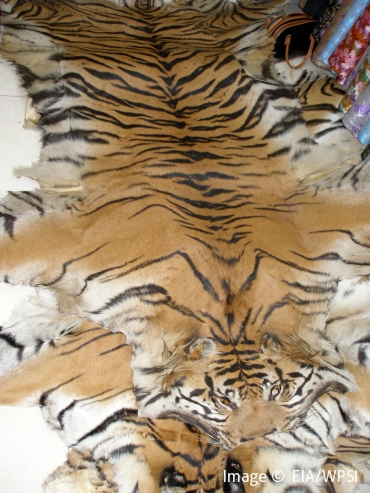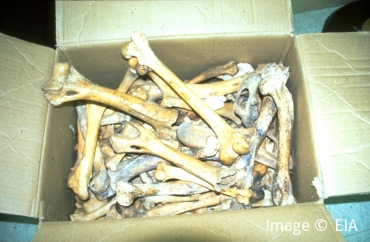Unfortunately, the threats that are driving tigers closer to extinction all stem from us, man. Tigers are threatened by habitat loss, conflict with humans, and poaching to feed to the illegal trade in tiger parts and products.
Poaching and the Illegal Trade
Poaching and the illegal trade is, without a doubt, the biggest and most concerning threat that the world's remaining wild tigers face. Demand for tiger skin, bone and other body parts, fuels and finances organised poaching and trafficking, which has had a rapid effect on tiger sub-populations and resulted in localised extinctions.
The continued demand is putting the species under huge pressure and driving them closer and closer to extinction. Skins are seen as status symbols, used for home décor, whilst bones are used in tonics and medicines. Both are traded by illegal criminal syndicates for huge profits.
Since 2000, the skins and carcasses of at least 1,031 tigers have been intercepted in trade and an additional 136 live tigers have also been seized. If you then take the INTERPOL rule of thumb – contraband seized is about 10% of what is actually being trafficked – the figure of poached and illegally traded tigers is probably, unfortunately, a lot higher. http://www.eia-international.org/hidden-in-plain-sight-chinas-clandestine-tiger-trade
Follow this link to watch the EIA's Hidden in Plain Sight video -https://vimeo.com/60444302
With illegal wildlife trade thought to be worth around US$10billion per year, the illegal trade in tigers (and other Asian big cats) has generated millions for organised criminal networks. It is vital that we work to expose the criminals involved and uncover the illegal sale of tiger parts in order to prevent this trade from continuing. By supporting charities such as the EIA, who conduct undercover investigations, we can help to do this.
Loss of habitat
An increase in human populations throughout tiger range countries has resulted in tiger habitats being reduced.
Over the past 100 years, tiger habitats have dwindled as they've been overtaken by agriculture, plantations, timber logging, human settlements and access routes.
Only 7% of the tiger’s historical range is intact today and tiger habitats are left in isolated areas. This results in small pockets of tiger habitat surrounded by human populations. Not only can this result in human/tiger conflicts as tigers roam to find new habitats, but it can also result in inbreeding in small populations which can reduce genetic diversity.

 ,
,  ,
, 



